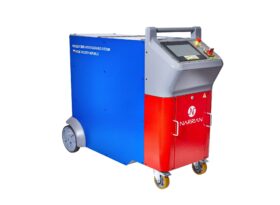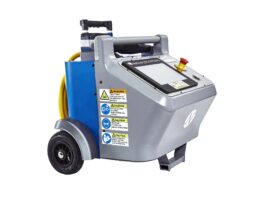Key parameters when choosing a cleaning laser
In this article we explain the importance of the individual parameters of cleaning lasers, the fundamental principle of laser cleaning and the applications for which each power series is suitable.
How does the cleaning laser work?
Our lasers emit tens of thousands of light pulses per second, which then get absorbed and remove contaminants from specific areas, these contaminants include rust, paint, separators, oxidation, silicones, various contaminants and more. No secondary cleaning process is usually required for a cleaning laser as the laser produces very little waste (smoke, contaminant particles).
Our range of laser systems starts from the smallest handheld variants with a power of a few tens of watts to robotic integrations with average powers of a few kilowatts. Each laser solution effectively removes contaminants but varies in power, speed and size of area to be cleaned. With adjustable parameters, the speed and quality of cleaning can be adjusted to be able to clean a larger area and achieve a higher speed at which contaminants can be removed.
The principle of laser cleaning
Individual laser pulses are emitted from the laser process head in beams with a circular or square profile. The pulsed fiber cleaning system can generate between 5,000 and 200,000 of these beams per second. The beam strikes the surface to be cleaned at a focal distance in the form of dots on the order of tenths of a millimetre in size (but can be increased all the way to 2mm). The uniform distribution of this concentrated energy on the surface to be cleaned is provided by either one or two mirrors integrated in the process head in our systems.
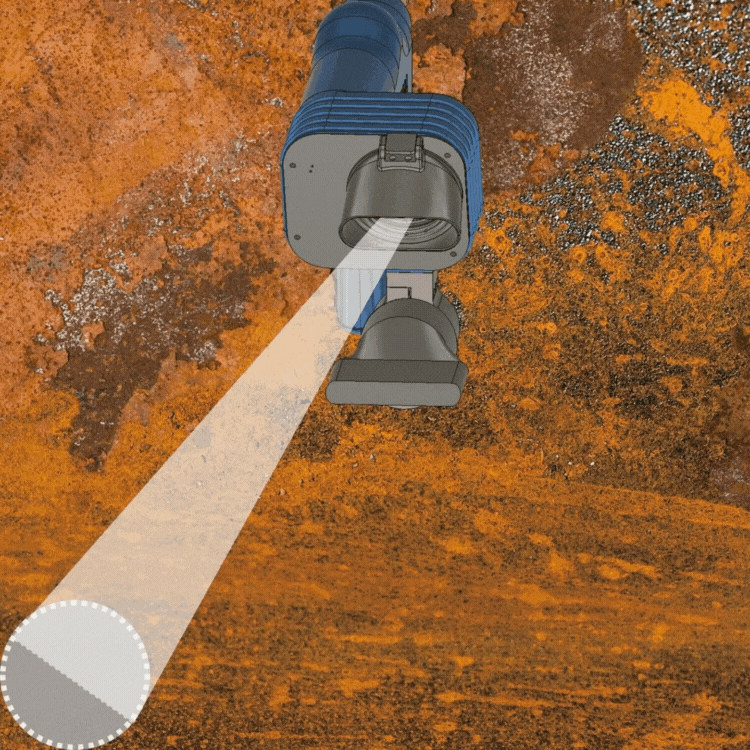
Laser beam scanning
A beam profile is very small circle point or square that is further scanned by the system at a speed of usually around 5 – 10m/s (even faster than 20m/s for special laser applications) into the shape of a line or various patterns to make the cleaning laser as efficient as possible.

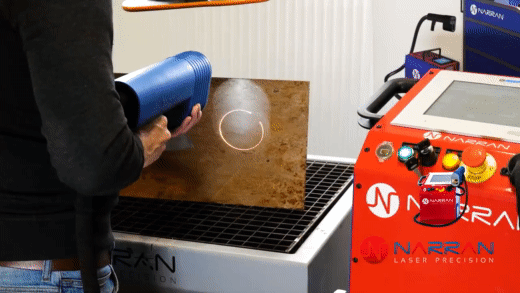
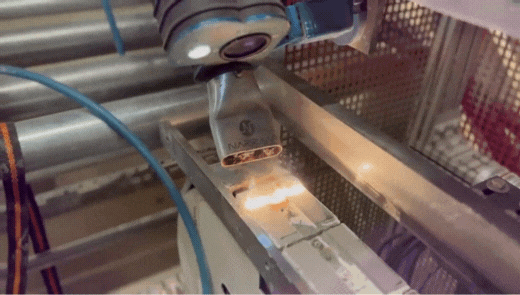
Pulsed or continuous laser, what is the difference?
Pulsed lasers emit flashes of light at a time interval.
– The laser does not emit any radiation between pulses.
– The period is the time from the start of one pulse to the next.
– Pulse duration (pulse width) is the time measured during the pulse, often at its full width and half maximum (FWHM).

Continuous wave (CW) lasers provide steady emission.
– Peak, minimum and average performance are approximately the same.
– Significantly greater heating of the material to be cleaned, which can cause damage.
– Period and pulse width do not apply unless the light is modulated.

What is peak laser power and what role does laser frequency play in cleaning?
Peak power means (as opposed to average or medium power) the power within one pulse, or if you prefer, the mean power of one pulse. The product of the pulse duration and the peak power gives the pulse energy.

The repetition rate is then a quantity that indicates the number of repetitions of a periodic event for a given period of time – for a laser it means the number of pulse repetitions per 1 second. Our systems have an adjustable frequency from 5 to 200kHz, i.e. 5000 to 200000 pulses per second. The frequency can be compared to the engine of a vehicle for ease of understanding. For optimum engine function without damaging the engine, you always keep it at a certain appropriate speed. For the most effective cleaning effect without damaging the material to be cleaned, the correct repetition rate must also be used.
So does the higher power of the system mean the ability to scan the beam into a wider line/larger patterns?
The answer is complicated in this case, purely from a technical point of view we can scan all powers in the same proportions, however, it must be taken into account that each laser system has a different energy and depending on the chosen lens also a different energy density. Increasing the area of the beam to be scattered reduces the efficiency of the laser and it may be that we need, for example, two or more passes of the laser for perfect cleaning.
Laser beam profile – Gauss or Top-hat?
Most of our cleaning laser systems (ROD 500, 1000 and 2000) have a TOP-HAT beam profile, which is characterized by a homogeneous energy distribution, however, for systems with lower average power, a Gaussian beam profile is more suitable due to the spatially normal energy distribution, so the laser can compensate for the lower power with a higher energy density and remove even more challenging material contamination.
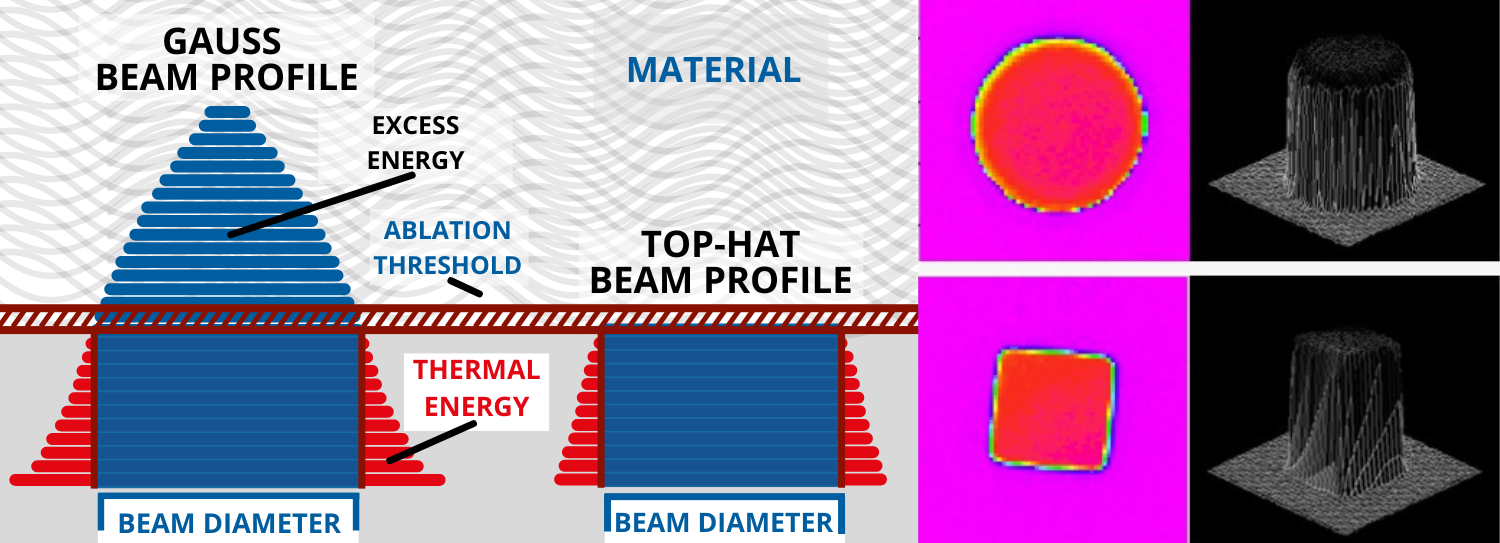
Laser power series
It is necessary to explain that from a theoretical point of view, all lasers can handle the same applications and the difference is primarily in the speed and may also be in the consistency of cleaning. While high-power systems have no problem cleaning areas on the order of square meters and thicker layers of dirt, lower-power systems are more suitable for smaller areas or applications where speed is not critical. The weakest lasers (ROD 50 and ROD 100) then either cannot handle, or can handle but only very slowly, the cleaning of thick deposits of contaminants, and are not recommended for such applications without a combination with another mechanical form of cleaning.
HIGH-POWER CLEANING LASERS
Our most powerful lasers provide the widest laser options available and operate at an average power of 1000 to 2000 watts (peak power in pulse is up to 2,500,000 watts). Simply put, this means you can cover a larger area in a shorter period of time, and we find these systems particularly useful in industrial applications where speed is of the essence and lasers run continuously, but service providers also purchase these systems from us as they allow them to complete jobs in the shortest possible time. Applications with the highest return on initial investment include:
- Cleaning of industrial moulds
- Removal of paints, varnishes and coatings
- Removal of oxidation, rust and corrosion from metal
- Decontamination of surfaces contaminated with nuclear substances
- Preliminary cleaning before painting or welding
- Applications in the aerospace, marine and space industries
ROD 500 (testimonials from GumiImpex, testimonials from MAGNA, testimonials from SumiRiko)
ROD 1000 (testimonials from Enne Pi)
ROD 2000 (testimonials from Novaco)
MEDIUM-POWER LASERS
Typical customers for medium power lasers are smaller industrial companies or entrepreneurs who plan to offer laser cleaning services or to complement their existing portfolio of services. Applications with the highest return on initial investment include:
- Cleaning of moulds
- Rust and paint removal
- Cleaning before gluing
- Welding preparation
Medium power lasers are the best choice for joint preparation and provide higher quality for welds with lower porosity. We currently offer two medium power options:
ROD 200 (testimonials from TOYODA GOSEI)
ROD 300 (testimonials from SŽDC)
LOW-POWER LASER SOLUTIONS
Low power laser systems operate at between 50 and 200 watts and are almost as efficient as higher power solutions. This laser solution is ideal for smaller applications that require maximum precision. The most common customers for lower power lasers are museums, restoration studios, car repair shops, schools, scientific facilities or companies using lasers for specific applications where cleaning time plays a small role. Common applications include:
- Targeted paint removal
- Preparation for bonding
- Pre-treatment of polymer materials
- Cleaning/restoration of historic buildings
The gentle and precise cleaning offered by our low power solution makes it an essential tool for cleaning the smallest and most delicate products. We currently offer three low power systems:
ROD 50 (testimonials from Museum Jihlava)
ROD 100 (testimonials from RESTO LASER)
ROD laser cleaning systems
